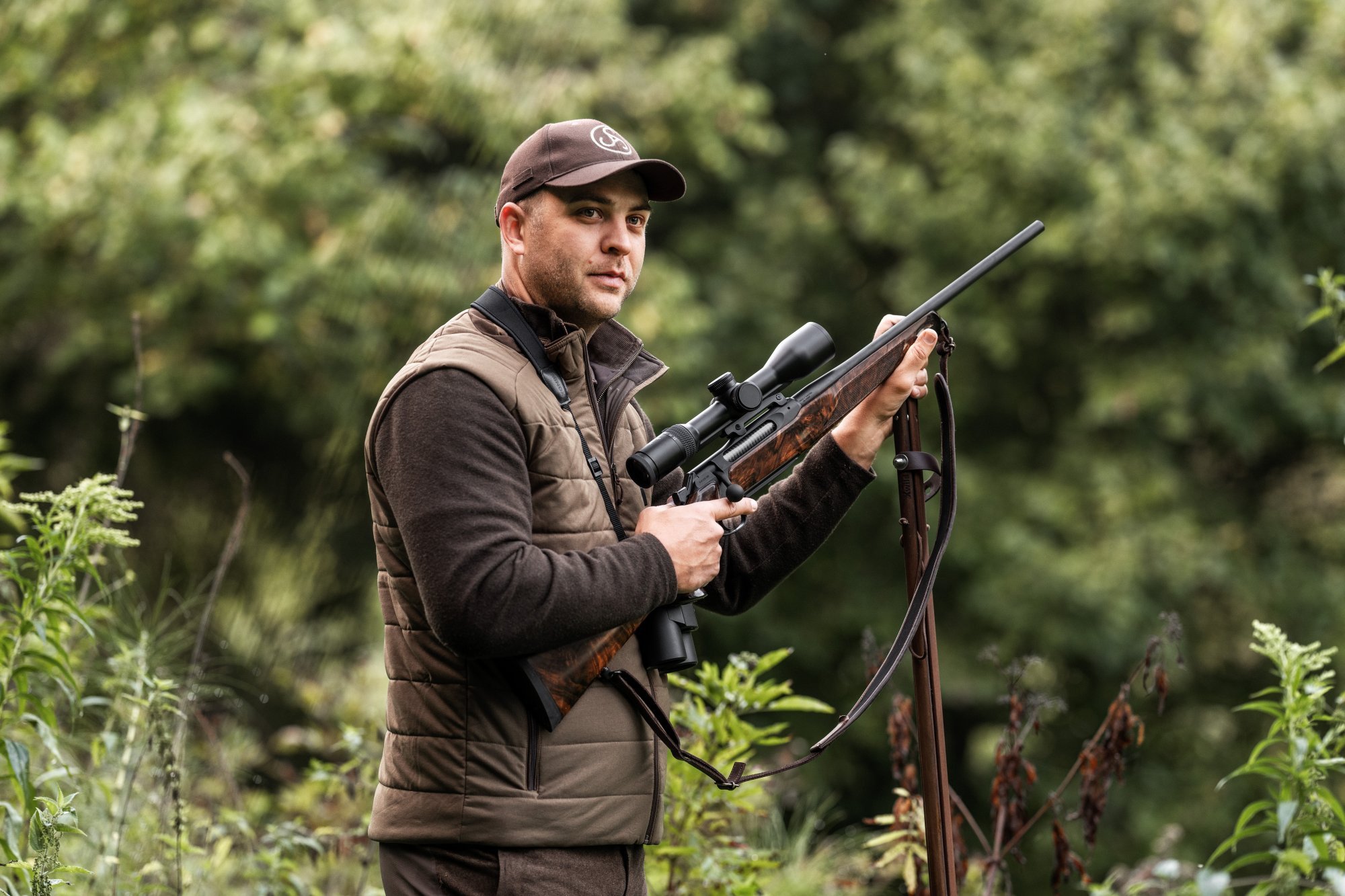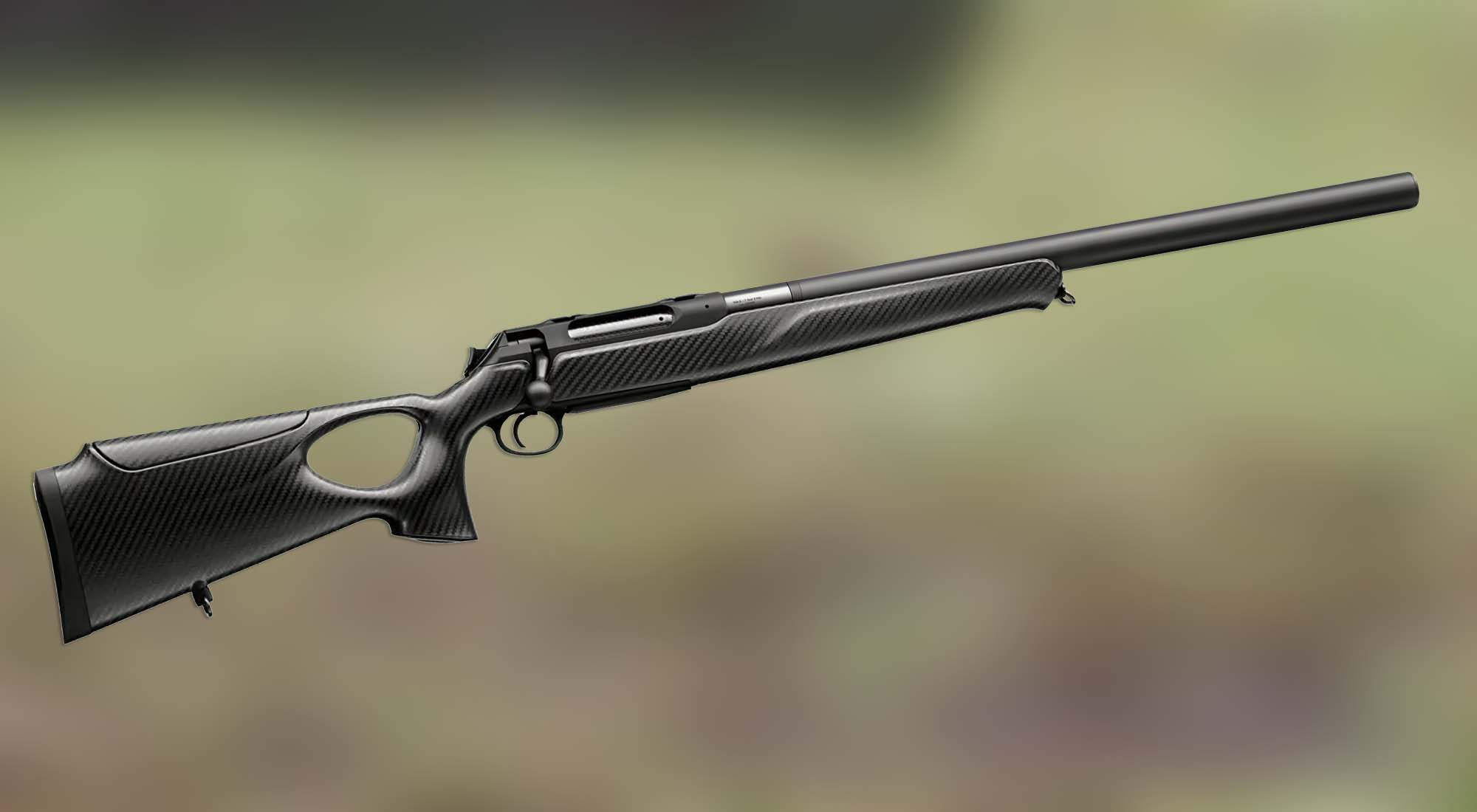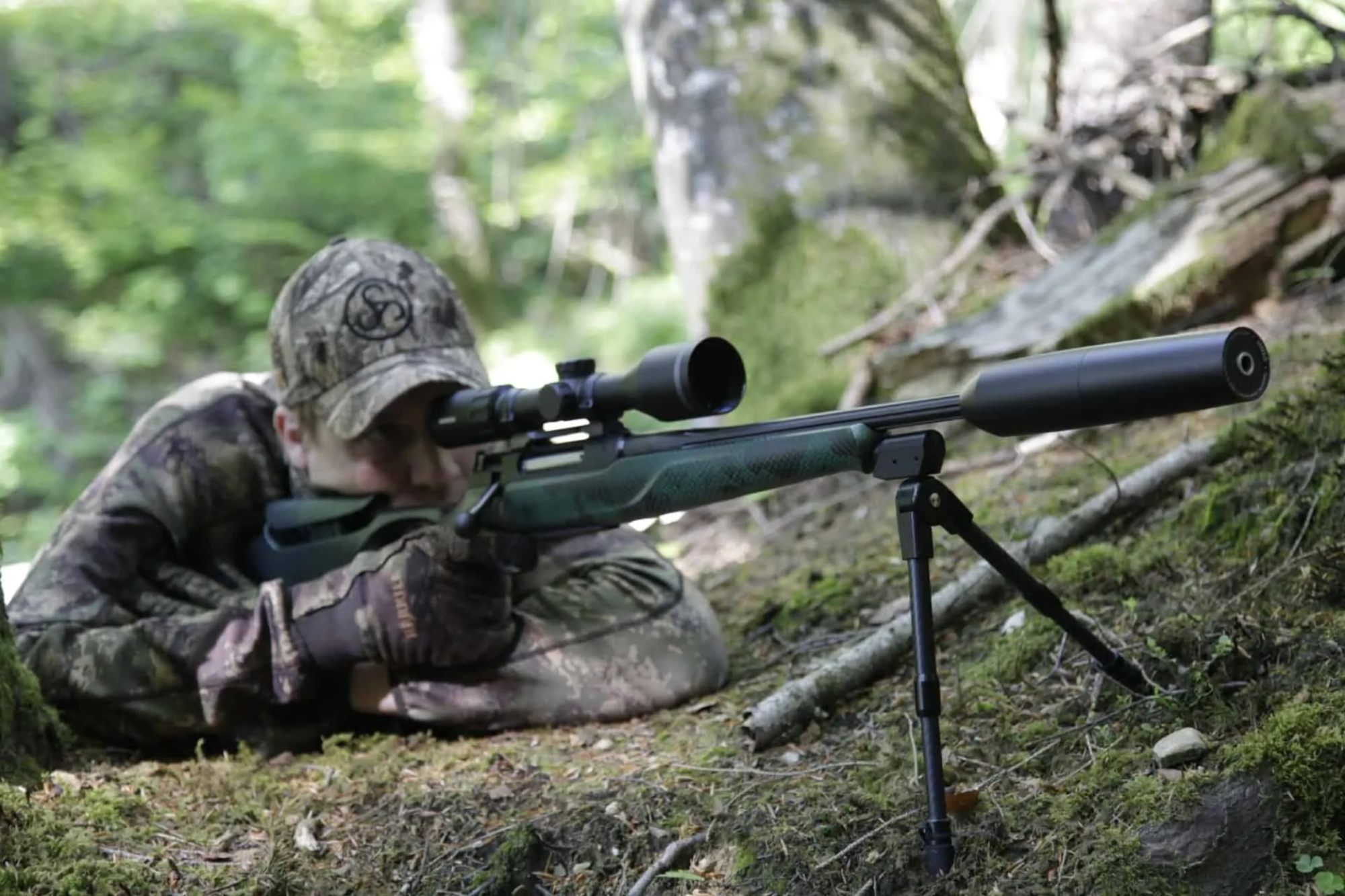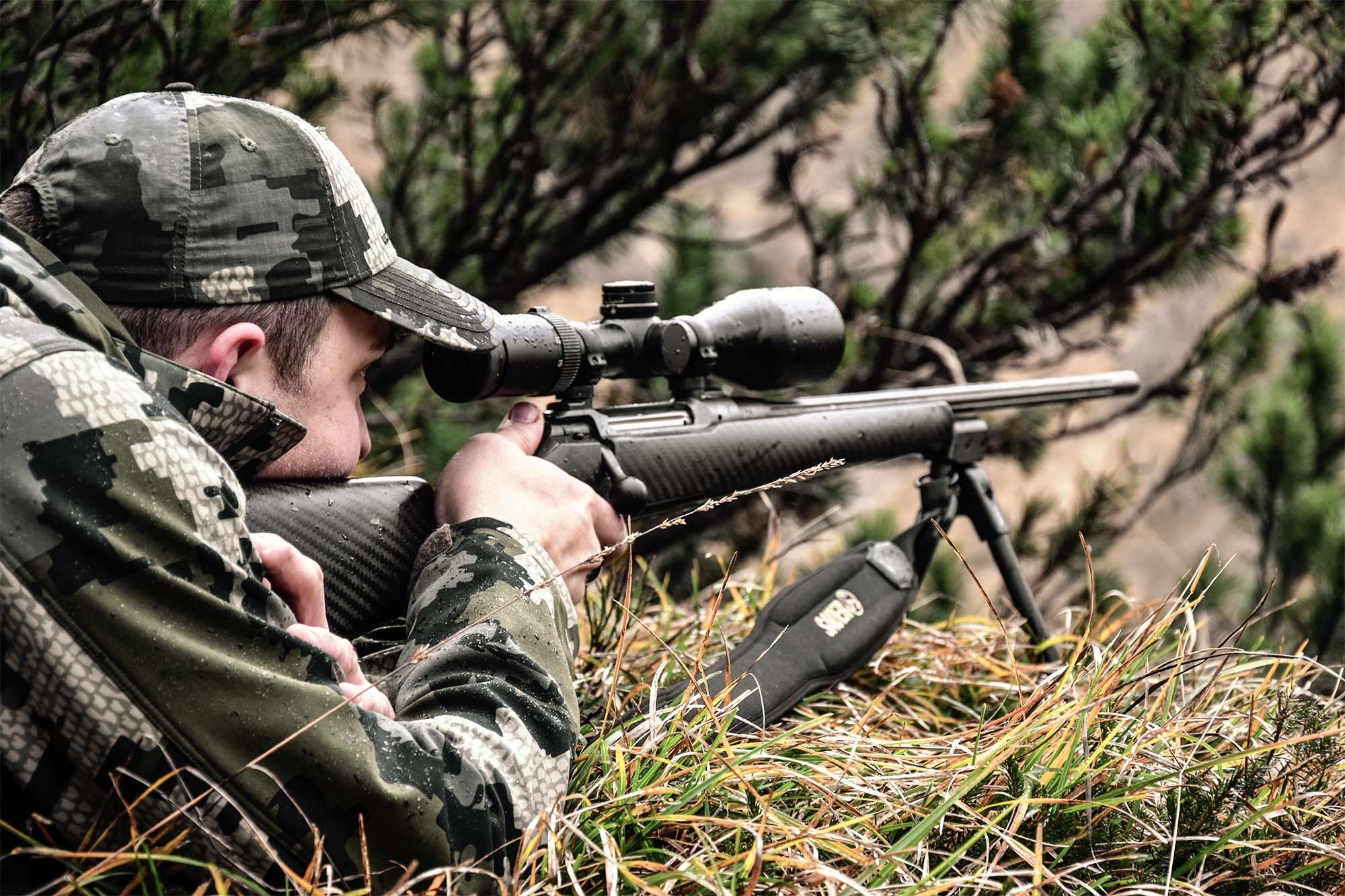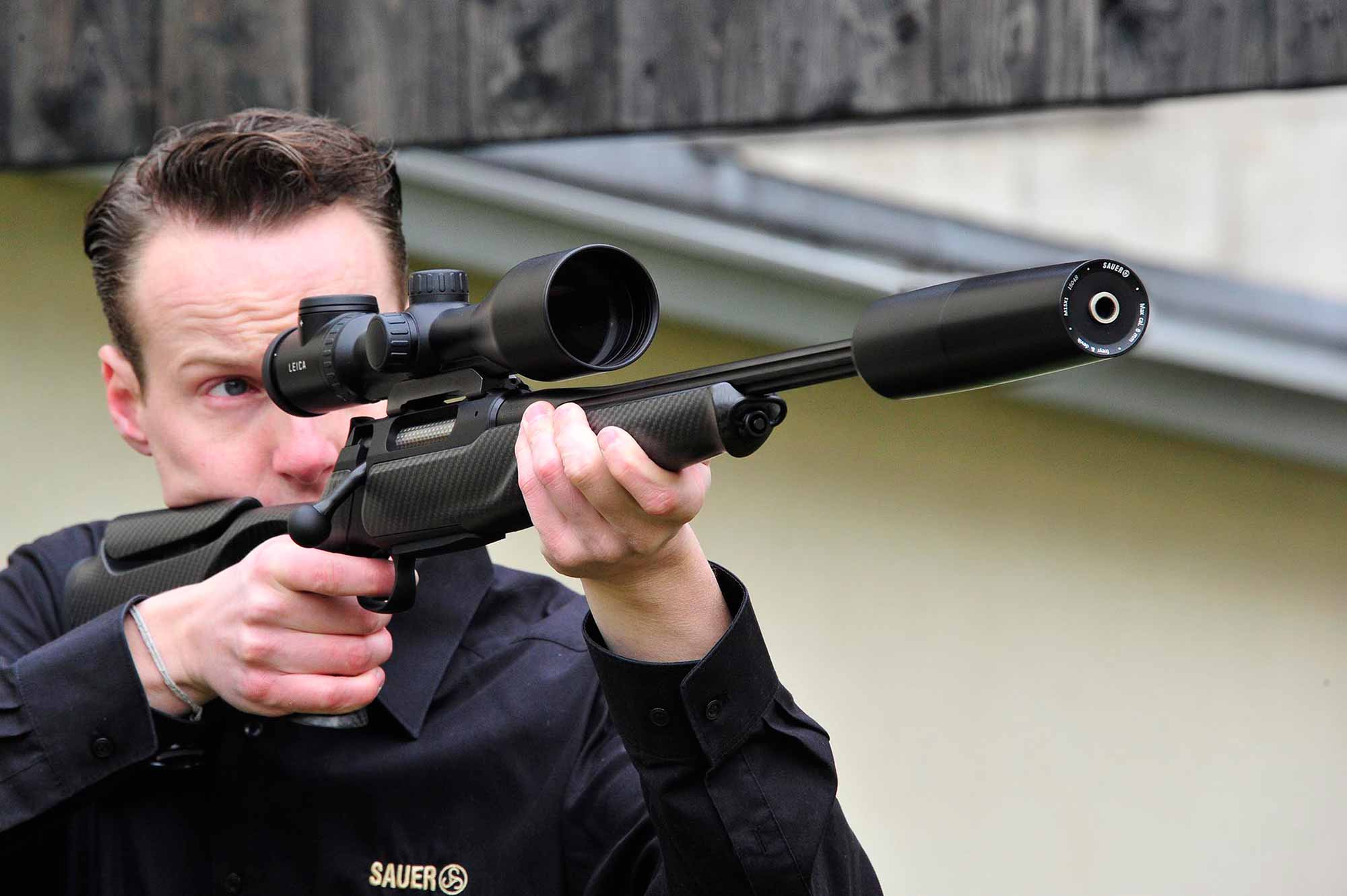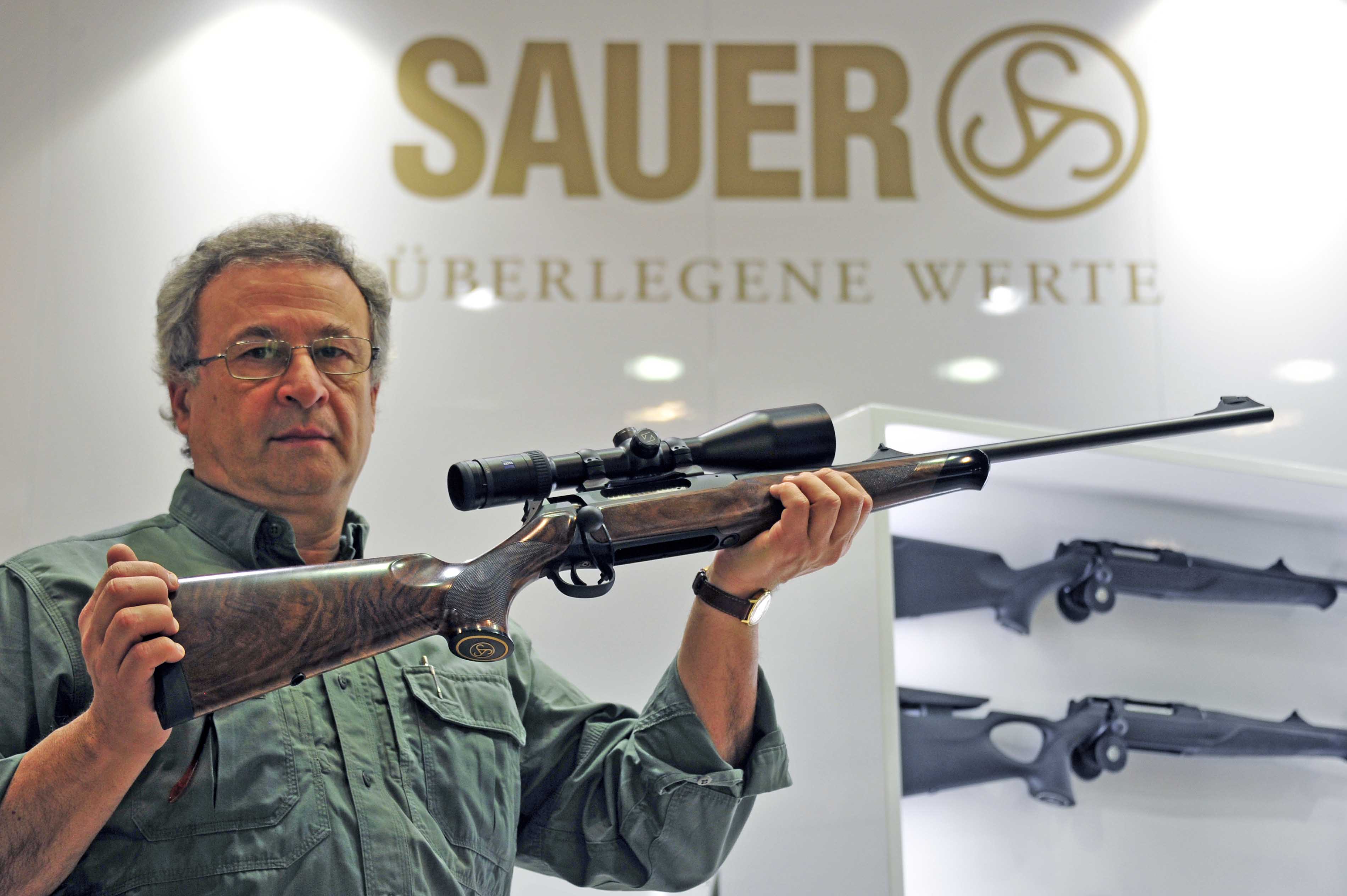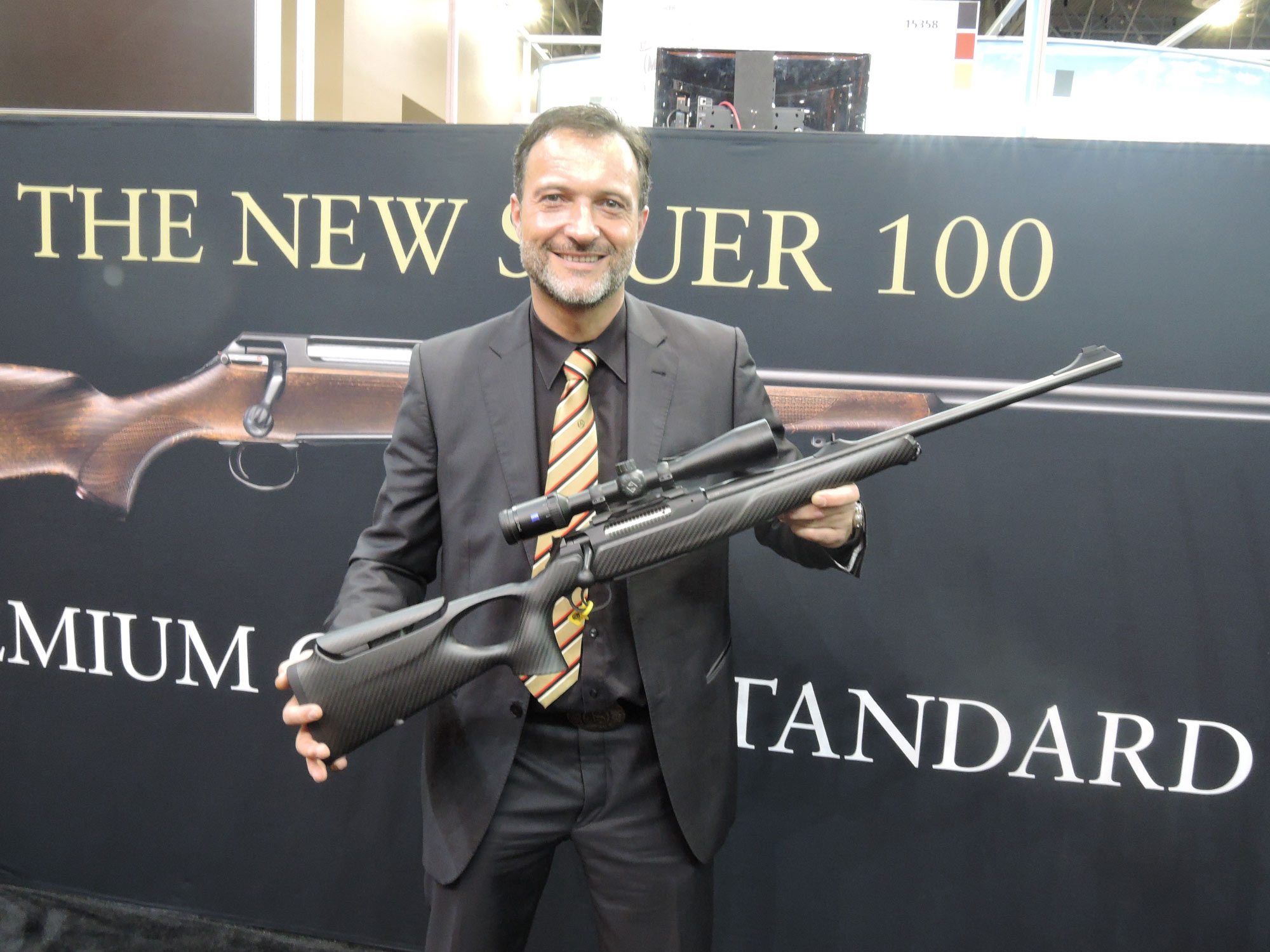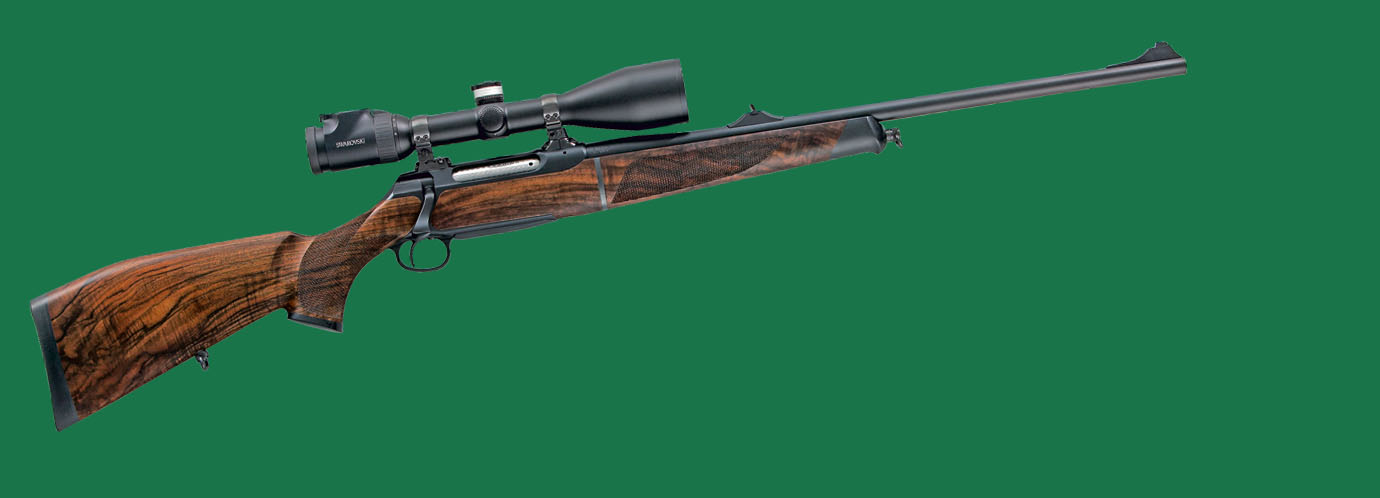A huge parcel from J.P. Sauer & Sohn GmbH arrived. At last. The contents: "Probably the most beautiful bolt-action rifle in the world". And that's not all: the Sauer 505 also promised "love at first sight". Heavy artillery being brought out. I wonder if the Sauer marketing boys (and girls) weren't laying it on a bit thick. J.P. Sauer & Sohn has more than 270 years of "professional experience" under its belt, so it's time to get down to business.
Spoilt for choice: these variants and calibes of the Sauer 505 are available – starting at €3,230
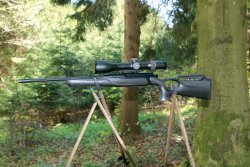
19 calibers are available for the new Sauer S 505. The minis are served with .222 and .223 Remington, the medium class consists of .243 and .308 Winchester, 6.5 Creedmoor, .30-06 Springfield, 8x57 mm IS and the 9.3x62 mm, among others. The short magnums are .270 WSM, 6.5 PRC and 8.5x55 mm Blaser, while the pure magnum calibers are 7mm Remington Magnum, .300 Winchester Magnum and the .375 H&H Magnum.
Sauer doesn't do things by halves with the stock variants of the S 505 either. In addition to the usual beauties made of wood and also in the Artemis stock specially designed for ladies, there is the "classic" polymer stock and the carbon fiber version tested here. The wood/Artemis (in wood grades 2 to 10) is available with or without a height-adjustable comb. This feature comes as standard with the thumbhole stocks. Sauer offers a total of eight different stock variants. The following basic stock variants are available:
- ErgoMax Black, RRP: 3,230 euros
- Synchro XT Black, RRP: 3,630 euros
- ErgoLux RRP: 4,031 euros
- Artemis/ErgoCompact, RRP: 4,031 euros
- Synchro XTC, RRP: 6,181 euros
For those who are still spoilt for choice, take note: there are three different equipment packages to choose from. The main focus of these packages is on the finishes of barrel, bolt and receiver. In the Elegance package (€733), the barrel and receiver have a DLC (Diamond Like Carbon) coating. The bolt has a jewelled finish. The Highland package (€931) includes a fluted barrel and DLC coating on the barrel, receiver and bolt. The cheapest option is available with the Outback package (€328). This includes the DLC coating on the barrel and receiver, an anodised aluminium bolt knob and a polished bolt. Many equipment details can also be purchased individually as options, such as a heavy barrel contour or fluting. An overview of the various possible combinations can be found here.
Our Sauer 505 Synchro XTC test model in technical detail
Let's start the "love that never ends" with the first impression of our test gun. The Sauer 505 was fitted with the Synchro XTC stock. The "C" stands for the carbon (carbon fiber) version. The gun has a total weight of approx. 3,230 g, including the saddle mount and scope it is 4,330 g. The barrel length is 51 cm. If you are a fan of short barrels, the bolt-action rifle can also be configured with a 42- or 47-cm "short" barrel. For those who like to have more of everything, there is also a barrel length of 56 cm. In the magnum calibers, the rifle is supplied with a 62-cm barrel, optionally with a 56-cm barrel. The fluted barrel with a 17-mm diameter at the muzzle has an M15x1 muzzle thread. A barrel contour of 19 mm and a corresponding M17x1 thread are also available.
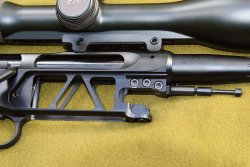
The centerpiece of the new Sauer S 505 is the steel receiver. The design is somewhat reminiscent of a bridge construction with struts for stabilisation. It appears compact and still solid despite the strong skeletonisation. The designers have also attached great importance to the bolt action. This is advertised with the attribute "silky smooth" and can hardly be better described. The repeating action just flows.
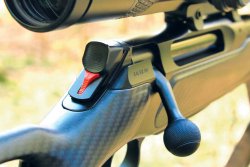
Sauer relies on manual cocking for the S 505. The resistance is easy to overcome even with little force, but does not give the impression that it is far too light. The manual cocking button is ergonomically designed. If you push the cocking lever towards the barrel, a red pin appears, similar to the tee in golf. The pin cannot be overlooked and can be felt very well even in the dark. To decock, simply push it a little further towards the barrel, press in the tee and allow it to move backwards. The so-called "Quattro" trigger can be set to four different weights and thus adapted to the respective hunting situation or personal preferences. Once you have removed the fore-end, you can see the four pre-marked positions for the preset trigger weights on the left-hand side above the trigger. These are 350, 750, 1,000 and 1,250 g. The "Maglock" magazine safety is also well thought out. The upper part of the push button can be moved. If it is not positioned exactly over the button, the magazine is locked. Modularity is important to many users these days. The rifle can also fulfil this wish. The caliber can easily be changed at home. However, if the bolt face dimensions of the calibers differ, a new bolt is required; in the case of the Sauer 404, the cheaper replacement of the bolt head alone would have been enough. The barrels are cold hammer forged, the surface is plasma nitrided. Sauer relies on the (Blaser) saddle mount and thus achieves repeatable precision.
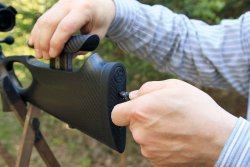
If the initial infatuation is to turn into something serious, you have to take a closer look at the object of desire. The buttstock ends in a rubber butt plate and gives a good feeling when shooting. There are two holes in the rubber. Basically nothing unusual if you want to replace a butt plate. With Sauer, however, the upper hole is part of the cheek rest, which can be adjusted in height by six centimeters. This can be adapted to the respective user by means of a hidden hexagon socket. The appropriate Allen key is integrated into the sling swivel of the buttstock. The back of the stock is dead straight, the opening for the thumb in the stock is sufficiently dimensioned. Once you grasp the pistol grip, you immediately feel comfortable. Although it initially seems rather chunky and steep, it is somewhat narrower in the right places and more generous in others. The stock neck is very narrow. But there doesn't have to be any space on it, as the gun works with manual cocking. On the left side, a small wing protrudes next to the trigger guard. This can be pressed towards the stock to release the bolt locking mechanism and remove it from the receiver. This feature is wonderful for small fingers, but somewhat wider fingers will find it difficult and are more likely to press the wing with a fingernail.

You have to smile when you operate the bolt. It just glides along, there is no scratching, hooking or purring. No extra noise disturbs the ear, just a velvety glide. Its six locking lugs lock directly into the barrel. The single-stack polymer magazine can be loaded with three cartridges. Filling the magazine goes smoothly and the cartridges are also fed into the action without any problems or jamming. There is no chequering on either the pistol grip or the fore-end. The entire stock is smooth due to the carbon fiber surface. The fore-end is a Schnabel type. This is also where the second sling swivel is located.
The optic in the test: Blaser B1 4-20x58 IC riflescope

Sauer relies on a (Blaser) saddle mount to hold an optic – proven, precise, classic. The Blaser B1 4-20x58 IC riflescope was selected for this test. "B1" stands for the first focal plane in which the reticle is located. The abbreviation "IC" refers to the Illumination Control, whereby suitably configured R8 models from Blaser correspond to the riflescope and the illumination is switched on when the R8 is cocked. This optic weighs 885 g and has an overall length of 365 mm. The turret on the left is fitted with the windage adjustment. The parallax can be adjusted on the turret on the right. To do this, the rear adjustment ring must be lifted and turned in the appropriate direction. The ring engages at 100 m, but can be turned further after lifting. Dot illumination can be adjusted on the front ring. The trick is to lift the ring as well and then move it forwards or backwards as far as it will go. Once the desired brightness is reached, simply let go. To change the battery, the brown Argali plate must be unscrewed with a little force. The turret on the main tube functions as a quick reticle adjustment (QDC: Quick Distance Control). To prevent unintentional adjustment, the ring must first be lifted in order to be able to rotate. If you want to adjust the reticle from spot to GEE (most favorable zeroing range), a small dot has already been set at four clicks. The reticle adjustment per click is accordingly 1 cm at 100 meters. The price for the optics is around €3,000
Practical test: the Sauer S 505 on the shooting range and the hunting ground – very good accuracy with lead-free ammunition from GECO and RWS
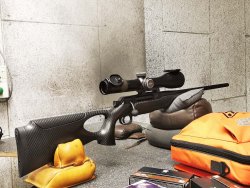
The Sauer S 505 was tested on the shooting range with six different loads. The winners were the lead-free EVO Green loads from RWS and the GECO Star, each with a 14-mm grouping.
Being able to go hunting with a well-functioning test gun is always a great pleasure. After all, practice shows whether there are any weaknesses. I was able to take my high seat at dusk in the early morning. The day before, we had confirmed a yearling and a small roe deer at this spot. Using the thermal imaging device, I was soon able to make out a signature, but was unable to locate it in the forest. Another ten minutes later, it was clear that it was a narrow-antlered deer. I had already picked out a gap when another one suddenly appeared out of nowhere and chased the roe deer down a small hump. Too bad. I silently eased the S 505 back down. Then suddenly there was movement in the forest again. Both deer ran towards the seat and stopped about 20 meters from the edge of the forest. The small deer collapsed on the spot and the other one jumped off into the neighbouring meadow. Hunting luck and thanks to the huntsman.
Sauer S 505 Synchro XTC test rifle technical specifications and price
| Model: | Sauer 505 Synchro XTC |
| Caliber: | .308 Winchester |
| Capacity: | 3+1 rounds |
| Overall Length: | 1,015 mm |
| Barrel Length: | 20"/510 mm |
| Twist Rate: | 1:11“ |
| Trigger Pull Weight: | 350 -1,250 g |
| Weight: | 3,160 g |
| Price (German RRP): | 7,112 euro |
| Equipment: | Manual cocking, carbon-thumbhole stock, adjustable cheek rest, barrel/caliber change option, fluted barrel, knurled aluminium bolt knob, DLC coating on barrel, receiver and bolt. |
Love at first sight? Test summary of the Sauer 505 Synchro XTC
At first I had to smile at the slightly presumptuous arrogance of the advertising slogans, but I soon lost my laughter as everything turned out to be true. The extras on the Sauer 404 were consistently omitted on the 505. Anyone who already owns a 404 but would like to switch to the 505 system can do so without any problems, as the barrels and stocks of the 404 fit, only the magazines do not. But back to the new love: the workmanship of the carbon fiber stock is flawless. If there is a burr or two or the gap dimensions are perhaps not right, you can look for a fly in the ointment with the Sauer S 505 and you won't find one. Of course, other manufacturers also offer adjustable cheek rests, but most stocks have screws or press studs that spoil the overall appearance. Sauer keeps everything clean and simply includes a small tool with which everything can be adjusted very easily and comfortably. And this one tool works for everything on this gun. It can be used to loosen the fore-end, adjust the Quattro trigger and even open the barrel clamp if necessary, although a large hexagon socket would probably be the first choice in this case. The manual cocking works perfectly and the action is extremely smooth. Changing the caliber is child's play. The screws to be loosened are numbered and the individual steps are almost self-explanatory.
If I could only use one word to describe the Sauer S 505, it would be "perfect". Thank you very much for this incredibly beautiful rifle, which you really can't help but fall in love with.
More information and an overview of all model variants can be found on the Sauer website.



